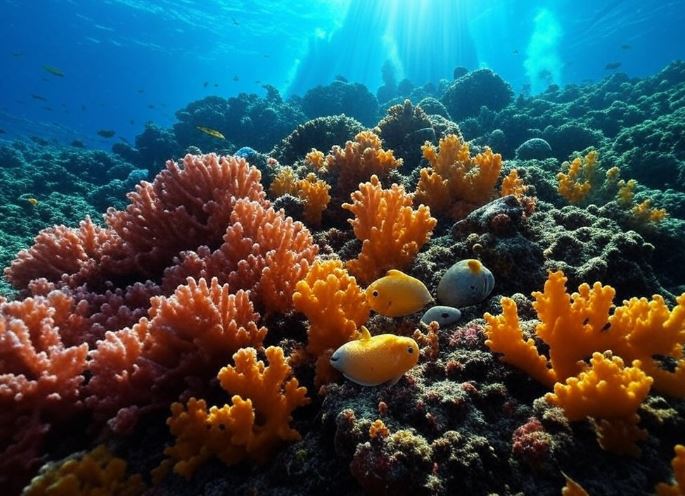Gulf of Mexico – The asteroid that wiped out the dinosaurs 66 million years ago didn’t just leave destruction in its wake—it may have sparked a surprising boom in underwater life, according to groundbreaking new research. Scientists studying the Chicxulub impact crater, located beneath the Gulf of Mexico and widely recognized as ground zero for the mass extinction event, have uncovered evidence of a thriving marine ecosystem that persisted for over 700,000 years after the cataclysm.
The findings, published this week, reveal that the asteroid’s impact triggered intense hydrothermal activity deep within the crater. This geological upheaval circulated a potent mix of nutrients and osmium—a rare element linked to the asteroid—into the surrounding ocean waters. Far from a barren wasteland, the region became a biological hotspot, fueling a rapid recovery of marine life. Researchers identified a dominance of plankton species known to flourish in nutrient-rich environments, suggesting the crater acted as a natural engine for ecological renewal.
Also Read: IMF and Argentina Reach $20 Billion Staff-Level Deal to Stabilize Economy
As the hydrothermal activity eventually tapered off and nutrient levels declined, the ecosystem shifted, giving way to species adapted to lower-nutrient conditions. This dynamic rise and fall paints a complex picture of life’s resilience in the wake of disaster. Scientists say the Chicxulub crater served as a “hotbed” of biodiversity, challenging the notion that massive impacts only bring devastation. Instead, the study suggests these events can create unique conditions that nurture new life forms.
The discovery reshapes our understanding of Earth’s recovery after the extinction of the dinosaurs, highlighting nature’s ability to rebound even from the most catastrophic blows. For researchers, it’s a reminder that destruction and creation often go hand in hand.
key Points:
Chicxulub Impact: The asteroid that killed the dinosaurs created the Chicxulub crater, located under the Gulf of Mexico.
Marine Ecosystem Boom: New research shows the crater supported a thriving marine ecosystem for over 700,000 years post-impact.
Hydrothermal Activity: The asteroid triggered hydrothermal systems that released osmium and nutrients into the ocean, driving biological recovery.
Plankton Dominance: Nutrient-loving plankton species thrived in the enriched waters during this period.
Ecosystem Shift: As nutrient flow decreased, species adapted to lower-nutrient conditions took over.
Dual Impact: The findings suggest massive impacts can both devastate life and create conditions to sustain new ecosystems.
Resilience of Life: The study highlights nature’s ability to rebound after catastrophic events, redefining post-extinction recovery.



